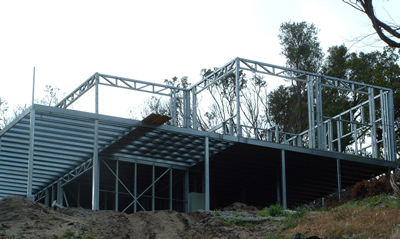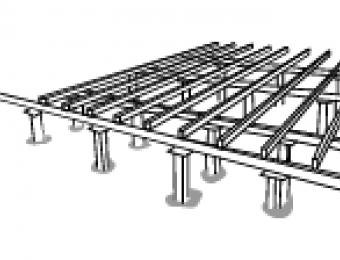
Image courtesy of STEER Manufacturing.
Steel can be used as an alternative to wood to create a sturdy beam and joist subfloor frame. Steel subfloor products are often designed to be modular, allowing for relatively simple installation, and are often used in extensions to existing houses.
The beams and joists rest on steel or brick pillars, but because they are stronger than wood, they require less support between beams. They can't be eaten by termites either, which may be a huge advantage if they're a big problem in your area. Steel is heavier than aluminium but it's also stronger.
Are there variations?
Depending on your circumstances, you can get different parts for what you need. If you have existing stumps, you can attach the beams and joists straight on. If you don’t have those in place yet, steel posts can be attached to the frame which allow you to adjust the height and balance of the floor to keep it level.
How is a steel frame sub floor installed?
The beams and joists are laid out and bolted to the stumps in much the same manner as wooden beams and joists. Steel posts can also be attached to the frame in place of stumps if none are available. You will be able to afford a greater span between beams with these materials, which means less footwork. Because many are modular, steel framing elements will interlock with greater ease if all the parts are compatible. Steel and aluminium beams and joists typically can't be combined, as they have different stress points.
Where are steel frame sub floors used?
These frames can be used in place of wooden beam and joist arrangements where extra strength is required or termites are a problem. Many people are now opting to build with metal beams and joists for their durability and stability, although steel does cost more than wood. They are commonly used as extension floors where the land slopes away from the main house, as the adjustable posts keep the floor level across the board.
|
Advantages
|
Disadvantages
|




